Breeding methods of viburnum "Buldenezh"
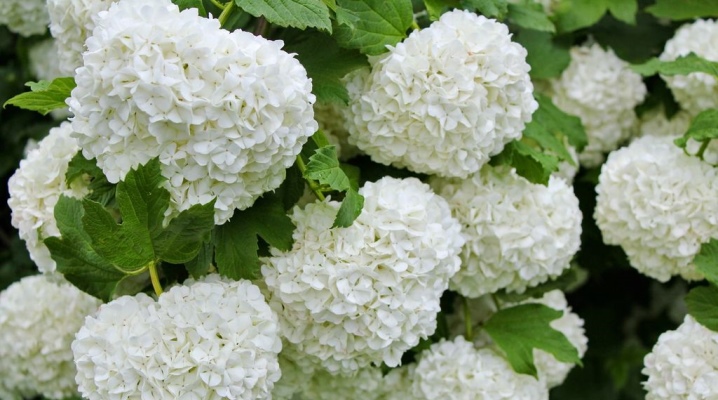
Boule de Neige is French for "snow globe". Perhaps this phrase ideally characterizes the plant, known to us as viburnum "Buldenezh". It's all about its magnificent snow-white globular inflorescences 15-20 cm in diameter, appearing in late spring and pleasing the eye until July. "Buldenezh" does not bear fruit (for which it received its second name - "sterile viburnum"), it grows on the site exclusively as an ornamental shrub. The height of the plant is 2-3.5 m. In addition to flowers of stunning beauty, it has carved leaves that turn purple in autumn.
Our today's material is devoted to the methods of reproduction of this shrub and the rules of caring for it.
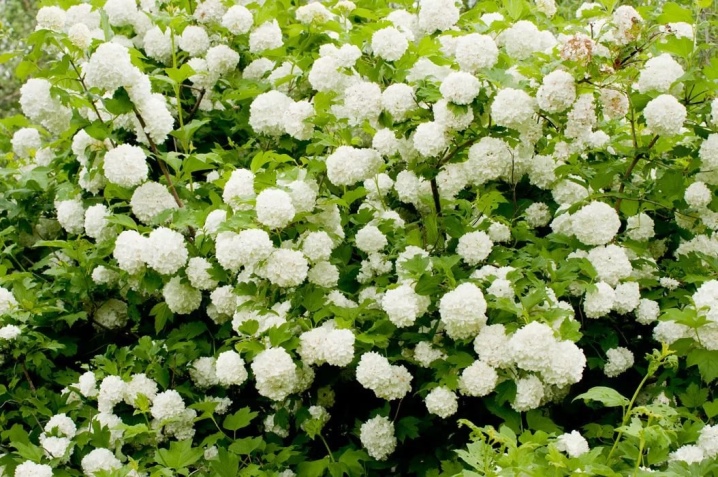
Optimal timing
Amateur flower growers who want to decorate their plot with Buldenezh viburnum often wonder when is the best time to propagate and plant this ornamental bush. Here's what the professionals advise:
- if you decide to breed "Buldenezh" by cuttings, summer will be the optimal season;
- chose the division of the bush - start in the fall;
- Well, the spring period remains for those who wish to try layering propagation.
An important tip: whichever method you choose, carry out the procedure in warm and dry weather. Otherwise, you run the risk of losing a young plant, it simply will not take root.
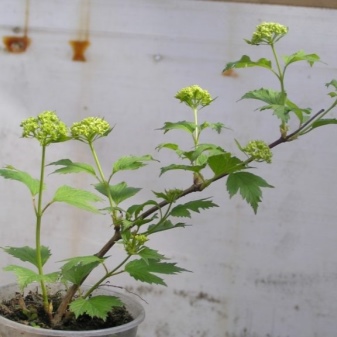
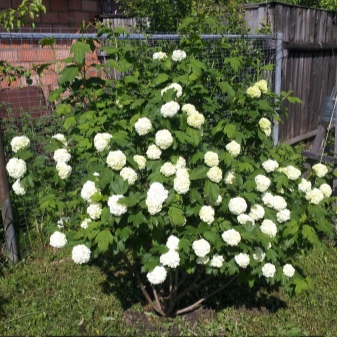
How to propagate by taps?
The first method that we want to tell you about is the propagation of the "Buldenezh" viburnum by layering. It is quite simple and very common.
You will need a shrub from 1 year old with good strong lower branches. Shallow grooves should be dug under it, moistened and fertilized. Then bend the selected branches to them, secure with wire arcs and sprinkle with soil, leaving the top open.
It is recommended to make several cuts in the bark of each of the layers for faster root formation. After you have finished the procedure for dusting the branches with earth, they should be well watered. Already in the fall, you can detach the rooted layers from the mother bush and plant them in a permanent place of growth.
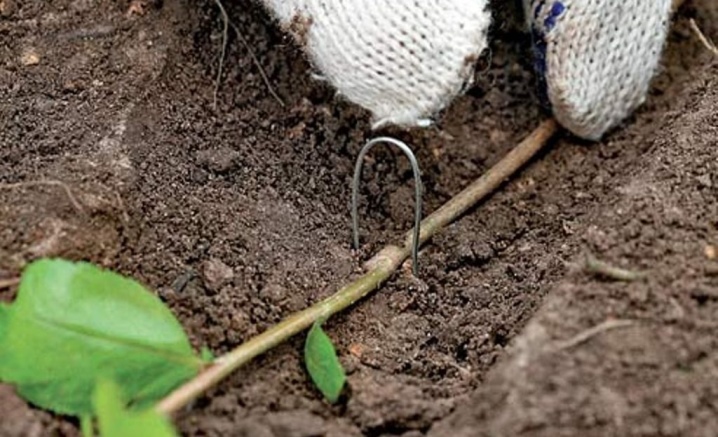
Features of cuttings
The next method that you should get acquainted with is propagation of viburnum "Buldenezh" by cuttings. It is more time consuming and less common, but still used by both professionals and amateurs.
So, first, you need to select several young shoots with 1-2 live buds... The best option is a semi-lignified stalk that is bent but not brittle. You need to cut from the mother bush by about 10 cm in length, leaving a couple of upper leaves, remove the rest.
Then place the resulting cuttings in a solution of "Kornevin" or any other stimulant of root formation for about 10 hours. Then you can choose one of 2 rooting methods.
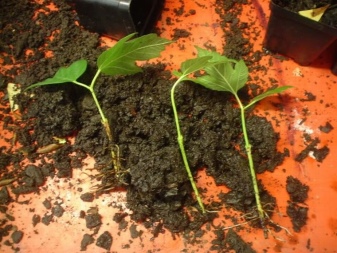
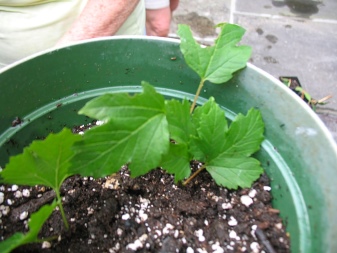
The first way
Stick the handle into a special peat tablet, put it in a plastic glass, after pouring about 0.5 cm of water there. A plastic bag is put on top of the container, which is fixed to seal and restrict air access. After that, the container with the handle is installed in the place of the house where the sun's rays fall, but it is important that they are not straight.
After 3 weeks, the first roots will appear from the peat - then the cutting is transplanted into a pot and again exposed to the light under cover, but no longer dense, in order to ensure the circulation of air masses. After another couple of weeks, the containers are taken out into the yard and buried in partial shade before spring arrives - then they are planted either for growing or in a permanent place of growth.
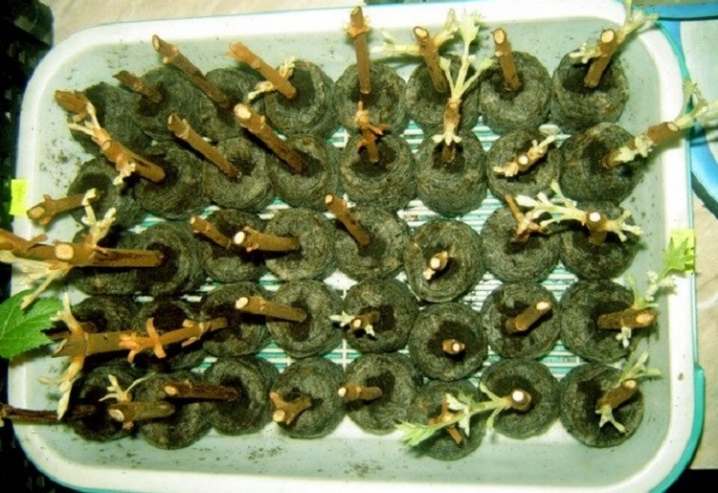
Second way
You can plant cuttings directly in open ground. For this, a garden bed is preliminarily prepared by mixing turf soil with humus and sand in equal proportions. This mixture must be thoroughly moistened.
The cuttings are deepened into the ground by about 2-2.5 cm, after which they are covered with cellophane or a plastic bottle. To increase the likelihood of rooting, remember to water your plantings regularly.

Breeding a variety by dividing a bush
The last method of breeding viburnum "Buldenezh" - dividing the bush. Everything is pretty simple here.
Select a bush that has a child shoot. Dig it out carefully and separate the roots from the mother plant. This should be done very carefully, because your task is not only to get a viable "baby", but also to keep a healthy "mother".
Plant the resulting plant in a new place. Perform care procedures according to the scheme.
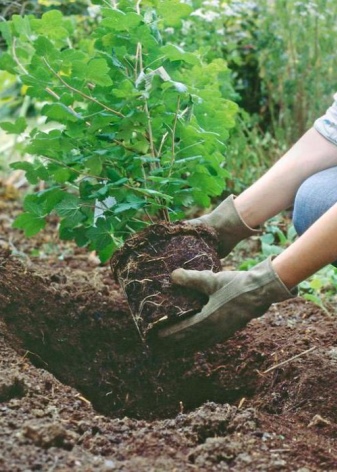
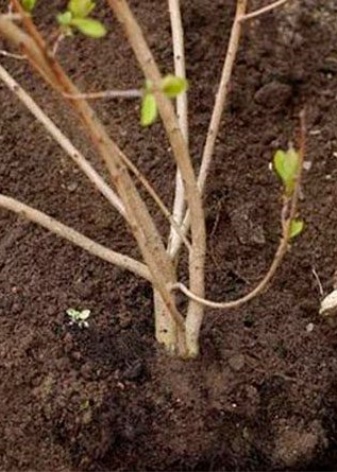
Further care
Kalina "Buldenezh", like other plants, requires attention and care. The procedures required for carrying out.
Moistening the soil
Viburnum sterile loves moisture. Watering should be done at least twice a week, pouring 20 liters of water under each adult bush. Youngsters need to be watered even more often. And if the summer is dry and hot, do not skimp on water and provide your viburnum with regular watering. If the plant has enough moisture, it will delight with lush white "balls" for the entire flowering period.
At the onset of autumn (before frost), water the viburnum especially abundantly in order to prevent dehydration of the soil in winter.

Top dressing
It is necessary to start "feeding" the plant from the second year of its life in the open field. The fertilizers applied during planting should be just enough for the Buldenezh viburnum to adapt to a new place and begin to develop.
The first feeding with nitrogen-containing nutrients is done in the spring, when the first leaves appear on the bush. It is also recommended to pamper the plant with rotten compost or humus by placing a couple of buckets under the bush.
The second feeding is done in the fall, before leaf fall. For her, take fertilizers containing potassium and phosphorus.
The form of release of nutrients can be any: if you choose liquid, then simply water the bush with it; if granular - scatter them on the surface of the ground under the plant, having previously loosened it. Then moisten the soil abundantly.
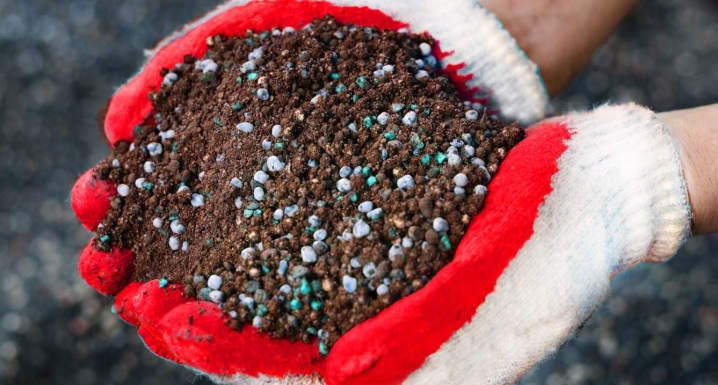
Trimming, pinching
To form a dense and lush crown, the viburnum "Buldenezh" must be cut off annually. This procedure is carried out in the summer at the end of flowering. Its essence consists in shortening the side shoots, removing dried branches, thinning the bush in the middle. Do not delay with pruning: this cannot be done at the end of August, as the plant begins to prepare for wintering.
As for the formation of the crown, you can choose a bush or standard shape. If you wish to leave a single central stem, remove all lateral shoots. If you want a multi-stemmed plant, cut off a young bush, leaving a stump 20 cm high to stimulate the growth of additional shoots on the sides. Forming is carried out when the viburnum reaches a height of 1.5-2 meters.
A pinch of the "Buldenezh" viburnum is necessary for a more lush flowering. New young twigs are pinched in late July and early August. Please note: sterile viburnum forms buds and flowers exclusively on the shoots of the last year, so they cannot be touched.
Sometimes, because of too large and numerous inflorescences, the branches of the viburnum "Buldenezh" bend and fall to the sides. Then the bush needs to be tied up.
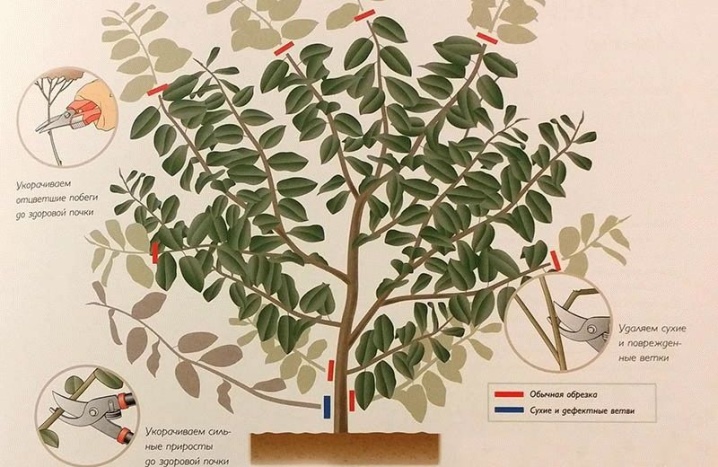
Plant wintering rules
In general, the viburnum is sterile - a fairly frost-resistant shrub, practically not subject to freezing. but if the climate in your region is rather harsh, and there are a lot of young shoots on the viburnum, before the onset of cold weather, you can insulate the plant's trunk circle by covering it with peat or humus.

Protection from pests and diseases
Let's say a few words about keeping your green pet healthy. If "Buldenezh" is overcome by gray spot or powdery mildew, spray it with Bordeaux liquid. By the way, for preventive purposes, such irrigation can be carried out in early spring.
If you find aphids on a bush, treat it with a soap solution; noticed the viburnum leaf beetle - garlic or onion infusion will come to the rescue.
For the prevention of pests in the spring time, use "Karbofos".
For information on what methods of breeding viburnum "Buldenezh" exist, see the next video.



































































The comment was sent successfully.